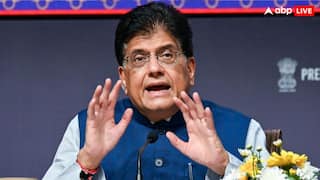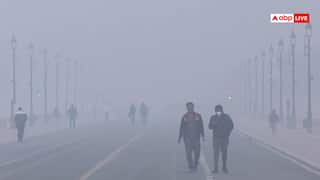Here Is How Sweltering Heat, Coal Shortage Leading To Power Cuts Across States
Power outages ranging from two to eight hours daily are plaguing several states from Jammu and Kashmir to Andhra Pradesh.

New Delhi: Severe heatwaves and acute coal shortages have caused blackouts in several regions of the country, as states battle to handle record electricity demand and low feedstock at power plants, PTI reported. Power outages ranging from two to eight hours daily are plaguing several states from Jammu and Kashmir to Andhra Pradesh.
The industrial sector has been struck the hardest, as it is the first port of contact for regulating electricity supplies.
Following the warmest March on record, large swathes of the country are still experiencing excessive heat in April, driving up electricity consumption to an all-time high. The country's entire electricity shortfall has surpassed 623 million units, exceeding the total shortage in March.
Low stocks of coal, the fossil fuel that generates 70% of India's energy, are at the core of the crisis. While the government claims there is enough coal to fulfil demand, the restricted availability of railway rakes to carry coal has resulted in coal stockpiles being at their lowest pre-summer levels in at least nine years. In addition, with international energy prices skyrocketing as a result of the Ukraine conflict, coal imports have fallen.
Aside from initiatives to improve coal supply to power plants, the Union government has encouraged states to increase coal imports over the next three years in order to stockpile supplies.
Thermal plants throughout the country are experiencing coal shortages, signalling a potential power crisis, according to the All India Power Engineers Federation (AIPEF).
On April 27, peak power demand was satisfied or the maximum supply in a day was 200.65 GW, while peak power deficiency was 10.29 GW.
According to the most recent statistics, 147 non-pit head plants with a combined capacity of moreover 163 GW monitored by the Central Electricity Authority (CEA) possessed 25% of the normative coal supplies on April 26. These plants used 14,172 thousand tonnes of coal, compared to the industry standard of 57,033 thousand tonnes.
Uttar Pradesh
Uttar Pradesh has a 3,000 MW deficit. The supply is just 20,000 MW, compared to a demand of roughly 23,000 MW, resulting in load shedding in rural regions and smaller towns.
According to statistics provided by the state power department, electricity is now provided in rural regions on an average of 15 hours and 7 minutes each day, as opposed to the planned 18 hours. Similarly, power is supplied on average in towns in 19 hours 3 minutes, as opposed to the scheduled 21 hours 30 minutes, and in tehsil headquarters in 19 hours 50 minutes, as opposed to the scheduled 21 hours 30 minutes.
At the district headquarters, however, power is available 24 hours a day, seven days a week.
Akhilesh Yadav, President of the Samajwadi Party, has chastised the BJP administration in Uttar Pradesh for failing to supply adequate electricity.
The government promises to offer 18 to 20 hours of power in rural regions, yet just 4 hours are accessible, and many areas remain blacked out the entire night.
Jammu & Kashmir
The Kashmir valley is experiencing one of its worst power outages in recent history, as unannounced and lengthy power cuts during the holy month of Ramzan have left much upset.
According to electrical department officials, the supply in April was between 900 and 1,100 MW, while the demand was 1,600 MW.
Tamil Nadu
Unplanned power cuts in Tamil Nadu have wreaked havoc on the industry, notably matchbox factories in Virudhunagar, Tenkasi, and Tuticorin.
The state administration announced last week that a 750 MW shortage from the central grid caused power outages in various areas of the state.
Andhra Pradesh
Andhra Pradesh is suffering a power shortage of around 50 million units per day, despite demand reaching 210 million units per day.
According to B Sridhar, the state's Energy Secretary, the present crisis, which is a national occurrence, might be over by the end of April.
"The power distribution companies (discoms) are tying up for 30 MU from real-time markets to overcome the deficit. But still, there is a shortfall of some 20 MU as power is not adequately available in the market. Consequently, we are implementing restriction and control measures for the industrial sector," he was quoted by PTI in its report.
He also stated that efforts were being done to guarantee that agriculture's electricity supply was not disrupted in order to safeguard the standing crops.
Currently, the state's discoms operate a two-day 'power holiday' for industries every week.
Jharkhand
Jharkhand Chief Minister Hemant Soren confessed that the state was unable to fulfil peak demand and that additional money was made available to procure power from the market.
Sakshi Singh, wife of cricketer Mahendra Singh Dhoni recently tweeted, "As a tax payer of Jharkhand just want to know why is there a power crisis in Jharkhand since so many years? We are doing our part by consciously making sure we save energy !".
Odisha
Odisha's administration claimed that the state's electricity problem will be addressed by the end of April, despite the fact that a major portion of the state's population complained about load shedding during the summer heat.
Odisha, which claimed to be a power surplus state, had an extreme power deficit in mid-April due to the collapse of one NTPC plant, which used to generate 800 MW.
Bihar
Bihar, too, is experiencing regular power outages in both rural and urban regions.
"Bihar is facing a power deficit of 200-300 Mega Watts (MW) per day because of the sudden increase in demand. The state's consumption is around 6,000 MW per day and the availability of power from different sources is 5,000 to 5,200 MW only. However, almost every day we are purchasing around 600 MW from the power exchange at higher rates for our consumers in the state," Sanjeev Hans, Secretary of Energy Department (Bihar) was quoted by PTI in its report.
Uttarakhand
Long power cuts are common in Uttarakhand.
Anil Kumar, MD of UPCL (Uttarakhand Power Corporation Ltd), blamed the acute power deficit on a surge in demand induced by the early arrival of summer, as well as the shutdown of a gas-powered power plant in Kashipur, Udham Singh Nagar district.
Rajasthan
In Rajasthan, electricity consumption has surged by 31%, resulting in power outages lasting 5 to 7 hours a day.
Rural areas are seeing more power outages than metropolitan areas.
Punjab
Farmers in Hoshiarpur, Punjab, halted vehicle traffic in protest over erratic electricity supply.
Although the paddy planting season has yet to begin in Punjab, electricity consumers are already experiencing unplanned load shedding in numerous areas of the state. Several cities, including Ludhiana, Patiala, and Mohali, have regular power outages. The state's maximum electricity consumption has already surpassed 8,000 MW.
Haryana
Haryana Power Minister Ranjit Singh Chautala stated that consumers will have access to continuous power within the next several days.
He stated that the current shortage was over 300 MW compared to the current daily demand of 8,100 MW, but that the gap will be filled by Saturday.
Chief Minister Manohar Lal Khattar has stated that the state's power outage situation would be remedied shortly.
However, the main opposition party, the Congress, has attacked the Haryana government, blaming it for the state's power issue, with the party's senior leader Randeep Singh Surjewala claiming that people were suffering as a result of frequent load shedding.
Maharashtra
Maharashtra has been enforcing load shedding since early April due to a power shortage of up to 3,000 MW.
Madhya Pradesh
Madhya Pradesh is delivering 11,875 MW against a peak demand of 12,150 MW.
According to KK Prabhakar, chief engineer of the Load Dispatch Centre (SLDC) in MP, there are no scheduled load sheddings in the state at the moment, and thermal power plants have no concerns with coal supply.
Gujarat
Gujarat Urja Vikas Nigam Ltd (GUVNL) Managing Director Jai Prakash Shivahare further stated that there is currently no load shedding in the state owing to a lack of coal.
"It is a fact that there is a shortage of coal across the country. But, overall we are managing things effectively. There is no load shedding at present and the Gujarat government is committed to not imposing any load shedding in the future too," he said.
Goa
To avoid load shedding, the Goa government purchased an additional 120 MW of electricity from the open market.
West Bengal
West Bengal is able to satisfy its electricity demand without a shortfall. According to a senior official, the state's typical demand is between 9,000 and 9,200 MW and can be met without load shedding.
Tripura
In Tripura, the shortage of around 140/150 MW is met by obtaining electricity from central PSUs through long-term power purchase agreements (PPAs) and power trading.
(With PTI Inputs)






































